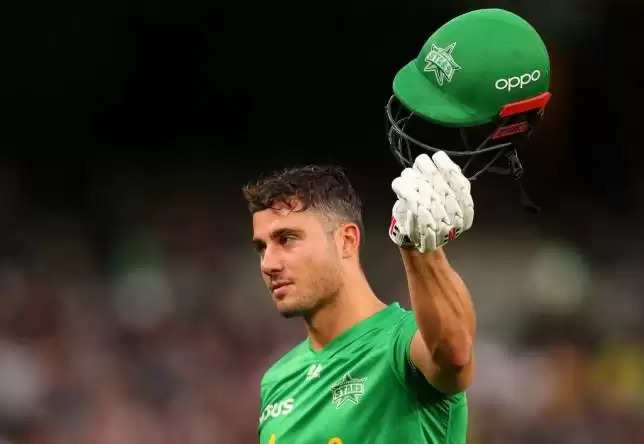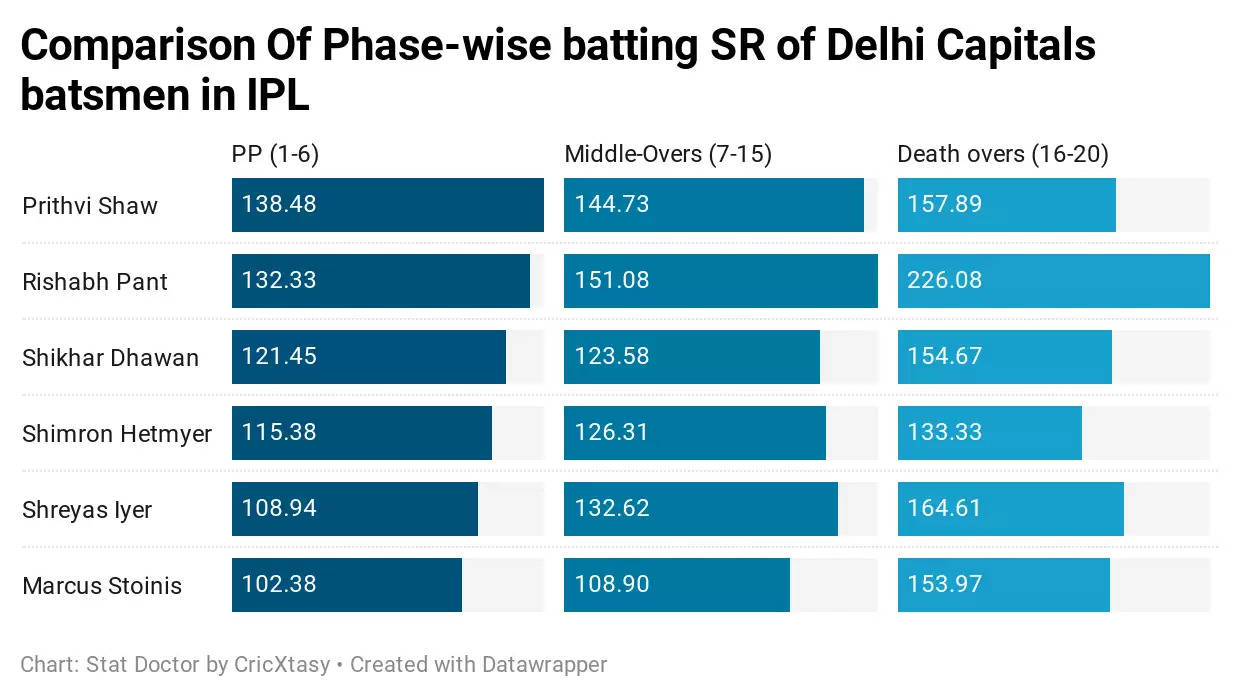IPL 2020: Does Marcus Stoinis fit into the role of a floater at Delhi Capitals?

Delhi Capitals’ acquisition of Australia international Marcus Stoinis in the IPL 2020 auctions for a price-tag of INR 4.80 crores had raised a lot of eyebrows.
The franchise already had a set top-order of Prithvi Shaw, Shikhar Dhawan and Shreyas Iyer. Moreover, they had quality backups for that role in Jason Roy and Ajinkya Rahane as well. So their interest in Stoinis, who is mainly a top-order batsman too, was a bit confusing. Yes, he does add value to the team with his bowling and the departure of Chris Morris from their squad had created the void for a player like him.
However, Stoinis is neither known for his power-hitting skills down the order nor for his death-overs bowling prowess like Morris. He is more of a player who anchors the innings from the top of the order and can chip in with a couple of overs on sluggish decks. While the latter skill perfectly fits to the Capitals’ home conditions and that in the UAE as well, his batting isn’t something that can be accommodated in a top four that is already well settled.

Also Read: Marcus Stoinis credits Matthew Wade for motivation him on his road to recall in the Australian side
So that leaves the Capitals’ management with two options – either to use him as a backup in case of injuries to the first team players or play him out of position in the lower middle-order to utilize his bowling skill. However, Capitals’ head coach Ricky Ponting left everyone perplexed when he revealed his plans of utilizing Stoinis in this IPL 2020 season.
“We’re sort of tossing up at the moment on where we’re going to Stoinis. He’s obviously had an outstanding form for Melbourne Stars at the top of the order, and the practice games Aussies have played over the UK. He was in sensational form, opening the batting there,” Ponting told Cricket Australia.
“As it turns out, we’ve probably got two of India’s best openers in Shikhar Dhawan and Prithvi Shaw so we might use Stoinis as a bit of a floater anywhere from 3-6. And we can bank on him for some bowling as well,” he added.
While Stoinis can still do a decent job as a batsman at number 6, the concept of using him as a floater higher up the order doesn’t bode well for the Capitals. He can be used at No.3 only if the team loses an early wicket, but they already have their skipper Iyer to do the damage control job at No.3.

Table: Top-order (Positions 1-3) numbers of Marcus Stoinis compared to the existing top three of Delhi Capitals
Moreover, as visible in the chart above, Stoinis doesn’t add much to the side as compared to the top-order options Delhi already have. He might score a bit more than the likes of Iyer, Dhawan and Shaw in terms of runs per innings but his scoring-rate isn’t good enough to put him ahead in the pecking order than the other three batsmen. Not only that, his inclusion ahead of any of these batsmen in this role robs the team off the flexibility of using another overseas asset to strengthen other departments.
Using Stoinis at any of the positions between No. 3 and 4 also pushes batsmen like Iyer and Pant a position down from their ideal batting number. So the Australian’s inclusion anywhere inside the top-half of the Capitals’ batting order will unsettle the entire batting lineup.
An example of that was seen in the recently concluded T20I series between England and Australia. After batting at No.5 in the first two matches, Stoinis was sent out to bat at No.3 in the final match of the series.
Although he did well scoring 26 off 18 deliveries at a strike-rate of over 140, his move up the order forced Steve Smith and Glenn Maxwell — both of whom got dismissed cheaply — to bat a position lower than their ideal batting number. That eventually messed up their batting order and if it wasn’t for Mitchell Marsh and Ashton Agar’s batting efforts, Australia would have lost that match as well.
If this is not enough, a far more granular analysis of Stoinis’ batting approach in IPL history will show why it isn’t ideal to have him batting anywhere in the top or middle-order.

Powerplay and middle-overs scoring rate doesn’t warrant Marcus Stoinis a place in Delhi Capitals’ middle-order
As visible in the phase-wise comparison of the Delhi Capitals’ batsmen in the graphic above, Stoinis once again has the lowest powerplay (102.38) and middle-overs (108.90) strike-rate among the aforementioned batsmen. Such a poor scoring rate in these phases is simply not acceptable and thus slotting him as a floater in the middle-order doesn’t make sense with players like Pant, Shaw and Iyer scoring at a much faster rate than him.
Also Read: Stories From ‘The Test’: Adam Zampa and Marcus Stoinis, The Love Café
The only batting role Stoinis could do justice to in this Delhi Capitals lineup is the lower middle-order (No.6 or lower) role. His death overs strike-rate in the IPL is in the high 150s, even then it is the second lowest among all the batsmen mentioned in the graphic above. It is not even his natural batting position either, but that is the only role that suits Stoinis in this setup in case the Capitals’ management become hell-bent on using him as a first-team material.

